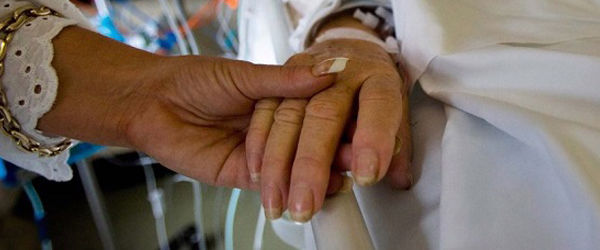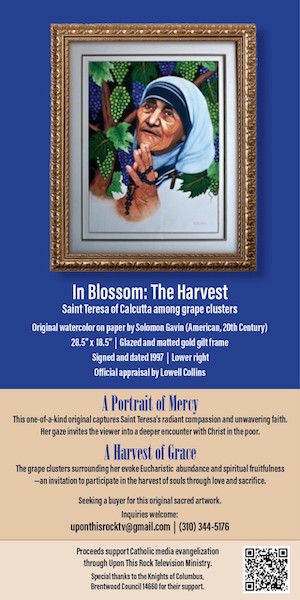The Church has sanctified extreme passions, blessed the frenzied, acclaimed the neurosis it had previously canalized and nothing, it seemed, could stop me at its door. Nothing." These are the words of a young intellectual, Maurice Sachs, just after he had converted to Catholicism in the early 20th century and they describe what had most drawn him there, namely, mysticism, sacramental rites, devotional practices, affective piety and most everything inside of Roman Catholicism that speaks of something outside of what can be understood rationally. In his memoirs, Sachs describes these mystical, sacramental and devotional elements as "rays of sunshine" and sees them as a radical alternative to the narrow rationalism that was the pervading intellectual atmosphere of this time and which he found suffocating. Maurice Sachs was just 19 years old when he was baptized and his journey towards Catholicism was strongly influenced by Raissa Maritain, herself a convert to Christianity from Judaism. She and her famous husband Jacques had met at the Sorbonne in Paris in the early 1900s. Both were agnostics at the time; she, agnostic about her Jewish religious heritage, and he, agnostic about his Christian roots. Each had gone to the Sorbonne precisely because, as non-believers, each wanted to be immersed in science and rationalism. But what they met there deeply disappointed and disillusioned them. They felt suffocated. Their minds and souls wanted more than pure science and reason and they soon left the Sorbonne, unsure of what they were looking for, but mostly sure in the fact that a rational world alone would never satisfy them. They began to search for an alternative and this led them to two intellectual mavericks, Leon Bloy and Charles Peguy, both of whom, because of their fondness for the mystical and devotional, drew considerable disdain from the intellectual world at the time. Leon Bloy eventually led the Maritains into the church, becoming Raissa's godfather at her baptism, and one of the things he introduced into their lives, something basically antithetical to everything they had met at the Sorbonne, was mysticism and devotional piety. These, more strongly than Christian dogmas, drew the Maritains into the church.
We struggle today in our churches to offer a vision both highly devotional and highly intellectual, one that provides food for the heart and the head equally. We tend to sell off one for the other.
Not long after becoming Christians, Raissa and Jacques, themselves now outcasts from the intellectual mainstream, began to hold weekly discussions at their house outside Paris. By this time, they had also read Thomas Aquinas and been deeply affected by his vision. It gave them an intellectual framework within which to integrate mysticism, sacraments and devotion. They now felt ready to mentor others and soon had a large circle of artists, writers, and intellectuals gathered around them, many of whom were eventually baptized. And what did they offer these people that the intellectual and cultural life of Paris at the time was not offering? How did they draw intellectuals and skeptics into the church? They offered them a vision of faith, Christianity and the church, which spoke to both the heart and the head in ways that neither the rationalism of the universities nor the unbridled piety of church circles at the time was able to speak. Their vision of faith addressed both heart and head. It was both highly devotional and highly intellectual all that same time, a rare formula. We struggle today in our churches to offer precisely such a vision, one that provides food for the heart and the head equally. We tend to sell off one for the other. Liberal circles tend towards a vision of faith and church that more properly honors reason but often doesn't leave much room "to sanctify extreme passions and bless the frenzied.” Consequently, we have lots of young people like Maurice Sachs who distrust a more-critical vision of faith and want their faith served up mostly with devotions, piety and catechetical clarities. They don't want scholarly criticism poking its head into their churches and shining its light into their certainties. And, because they feel that the scholarly world doesn't honor their religiosity, they regard that world in much the same way as the Maritains regarded their rationalist professors at the Sorbonne, a world of burnt-out rationalists, devoid of fire. But there's a near-perfect flipside to this: The circle of those who are fearful of and disdain the world of scholarly criticism tends to produce a vision of faith which, while making place for the pious, the devotional and catechetical clarity, lacks the empathy and embrace of a Catholicism that's wide enough to be acceptable to a thinking mind. While many young people, like Maurice Sachs, are attracted to this kind of Catholicism, millions of other people find it too suffocating, too intellectually narrow, too fearful, too mean, too self-absorbed and too much into self-protection to be palatable. So many just walk away and many others simply suffer their churches rather than draw any inspiration from them. And so we can learn a lesson from Raissa and Jacques Maritain in our search for a formula apropos the new evangelization. We need both hard, critical theology and gentle, heartwarming piety. Oblate of Mary Immaculate Father Ronald Rolheiser is a specialist in the field of spirituality and systematic theology. His website is www.ronrolheiser.com.

